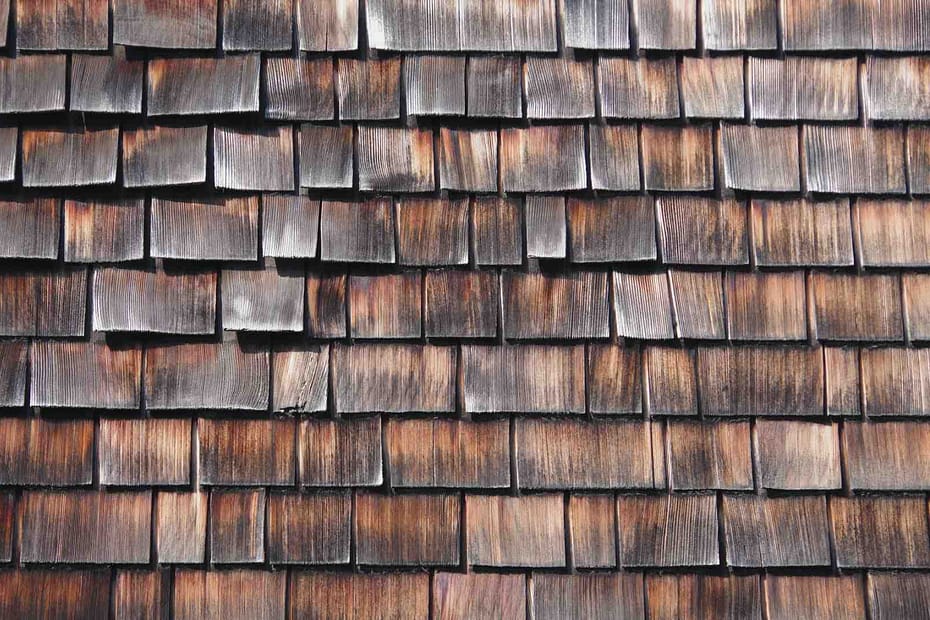Regal and beautiful, a cedar shake roof is one of the most distinguished roof types in America. Composed of an overlapping series of cedar panels called “shakes,” a cedar shake roof requires regular care and maintenance. As a reward, you’ll have a roof that boasts an elegant, natural orange hue that gradually fades to a silvery gray as time passes. Over time, it’s good to have the knowledge of how to tell if a cedar shake roof is bad to rely on your investment.
If you’re contemplating having a cedar shake roof installed on your home, or if you already have one, you might be wondering how to tell if a cedar shake roof is bad. After all, this pricey roof can last many decades if it’s kept in top condition.
In this blog post, we’ll take a look at some of the potential issues that can arise with a cedar shake roof. If you’re seeing these symptoms in any of your cedar shakes, it might be time to find a roofer who has experience with cedar shake roofs. They can help diagnose the problem and even make repairs that can extend the life of your cedar roof.
What is a Cedar Shake Roof?
A true cedar shake roof (which shouldn’t be confused for a cedar shingle roof, which is different) is made of individual, hand-hewn cedar tiles that must be installed by hand following a specific pattern of overlapping tiles that repeats in rows. This pattern is used in order to prevent roof leaks when it rains or snows. ced
Cedar shakes come in three different “grades,” which is an indication of quality. The three grades vary in price and quality, and are described below:
- Straight grain. The highest quality cedar shake, straight-grain shakes are cut to lay flat, which can resist curling, splitting and warping – three of the biggest indicators when it comes to how to tell if a cedar shake roof is bad.
- Common. The lowest grade of cedar shake. These are made from the leftover wood once all the straight grain shakes have been cut, and have the shortest lifespan.
- Select. Select shakes are made of 80% straight grain and 20% common shakes. These are often thought of as a compromise between quality and affordability.
Cedar shakes vs cedar shingles
When considering how to tell if a cedar shake roof is bad, it’s important to understand that cedar shakes differ from cedar shingles. Shakes are hand split from a large block of wood, while shingles are milled with a saw rather than by hand. This creates a thinner, more uniform shape for shingles. By contrast, one of the features of cedar shakes is that each shake is slightly unique in shape, size and thickness. Ironically, cedar shake roofs have a slightly shorter lifespan than cedar shingle roofs.

What Are Some Potential Issues With Cedar Shake Roofs Being Bad?
Despite their beauty, cedar shake roofs can be susceptible to a variety of issues that can potentially shorten their lifespan. Here are some of the things to look for if you’re wondering how to tell if a cedar shake roof is bad.
Curling
When a cedar shake is bent lengthwise, it’s called curling. While this is a natural process that begins as soon as they’re cut, shakes that are experiencing pronounced curling can expose the roof’s underlayment to moisture and therefore should be replaced.
Cupping
Shakes that are bent across their width experience something called cupping. This occurs as a result of a continuous cycle of wet and dry that causes the shakes to expand and contract. Cupping can also cause moisture to seep into the roof, since it can disturb the overlapping pattern of the shakes.
Cracking
Wood naturally expands and contracts over time, and that’s the case with your cedar shake roof, too. Over time, small cracks can form in cedar shakes. While small cracks are okay, it’s best to keep an eye on them and have your roof regularly inspected by a qualified roofing professional to ensure the cracks aren’t getting larger.
Splitting
Cedar shake roofs are hearty and can stand up to severe weather for the most part. But large hail or impact from large objects as a result of severe weather (like large tree branches) can cause your cedar shakes to split. Split shakes should be replaced, but often don’t indicate that the entire roof needs to be replaced.
Build up of moss and algae
Like all wood, cedar shakes are susceptible to mold, rot, algae, moss and other organic materials that can damage the integrity of the wood. In some cases, you might be able to spot visible mold, moss or algae from the ground. Also look for things like fraying along the edges of your cedar shakes, and dark streaks on your roof.
Bald spots
If you notice any places on your roof that are missing cedar shakes, it’s time to call a professional to have the area inspected. Missing shingles or shakes can quickly lead to moisture seepage, which can cause leaks inside your home.
Sagging
Sagging isn’t specific to cedar shake roofs, but if you notice that your cedar roof has taken on a sagging appearance, consider it an emergency situation and call a roofing professional right away. This could be an indication of structural issues with your roof.

How Long Does a Cedar Shake Roof Last?
A cedar shake roof should last between 30 and 50 years when properly cleaned and maintained. Staying vigilant and on the lookout for the factors listed above is the best method if you’re wondering how to tell if a cedar shake roof is bad. If you do find that your roof needs to be replaced, use Instant Roofer’s handy cedar shake roof cost calculator as a first step before hiring a professional.

